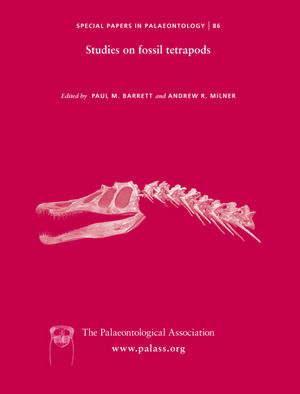Reg. Charity No. 1168330

A partial skeleton from the Sigiloceras enodatum ammonite Subzone (lower Callovian, Middle Jurassic) of the Oxford Clay Formation of Quest Pit, near Stewartby, Bedfordshire, UK, represents one of the basalmost Middle Jurassic pliosaurids. Marmornectes candrewi gen. et sp. nov. possesses seven autapomorphies and a longirostrine snout. Reassessment of pliosauroid relationships demonstrates that Thalassiodracon hawkinsii, Hauffiosaurus spp. and Attenborosaurus conybeari are successively more derived basal representatives of Pliosauridae. This indicates that a longirostrine snout was acquired among Early Jurassic pliosaurids (such as Hauffiosaurus) but that these early taxa had a small body size, long neck, and gracile skull and limb bones relative to the contemporaneous rhomaleosaurids, which were robust, large-bodied macropredators. The pliosaurid lineage only acquired its ‘characteristic’ large size, robust skull and short neck in the late Middle Jurassic after the extinction of Rhomaleosauridae.